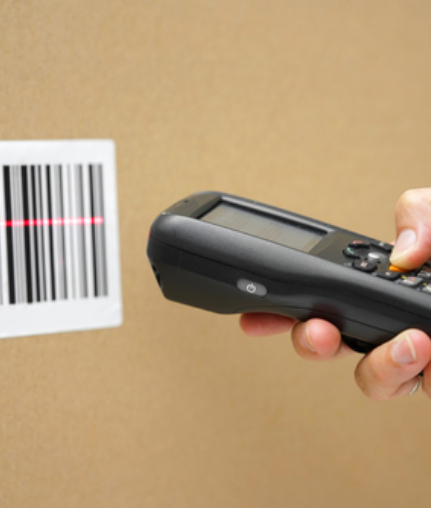The Complete Barcode Guide

What is going on at Express and in our industry. New product introductions and other items of interest.

Barcodes are traditionally described as a “manner of storing printed numbers for computers to read.It would, however, be more accurate to say that barcodes store printed information on a barcode label so that computers can read it.The first barcodes represented numbers using bars – lines written at various widths and spaced at multiple distances from each other.Barcodes went mainstream when supermarkets started to use it at checkout points. Wrigley’s Juicy Fruit Gum became the first product in the world sold with a barcode on June 26th, 1974.
These first barcodes were one-dimensional barcodes that were machine-readable and contained encoded information.Those used in supermarkets are so-called European Article Numbers (EAN), which is a standard used for 1D barcodes.The so-called EAN-13 is typically found on retail products, and display lines of various widths at variable distances apart, with a row of readable numbers below each string.
A great variety of barcodes quickly developed, all with different symbologies. The term symbology refers to the mapping between messages and includes the encoding of the encoding into bars and spaces, the size of the start and stop markers, and the size of the quiet zone before and after the barcode.
Code 39 defines 43 characters that include uppercase letters A to Z, numeric digits from one to nine, and some special characters.The most significant disadvantage of code 39 is its low data density. It requires substantial space to encode data, which makes it useless for tiny goods. Many postal services still use it, and most barcode readers can decode it. It is still used widely in the defense industry.
A code 128 barcode has these sections:
Two-dimensional barcodes can store more information than One Dimensional (1D) barcodes because they store information both vertically and horizontally.
A 2D Barcode can store approximately 350 times more information than a 1D barcode. 2D Barcodes store info in geometric patterns containing squares, hexagons, rectangles, and many other forms that can all be scanned and deciphered by computers.
2D Barcodes make it possible to store and display a great deal of information that remains readable even when printed directly onto the surface of products or packaging or tiny printed labels. This results in fast access to information. Also, 2D barcodes allow the encoding of URLs, which enables barcode readers to access a lot more information by going to the indicated websites.This ability to link to the internet makes 2D barcodes very popular as a tool for mobile users. Mobile phones are equipped with 2D scanners or with the ability to download 2D scanner and reader applications. One well-known app, Whatsapp, for example, comes with an inbuilt 2D scanner. There are many competing 2D barcodes, including QR Codes, Data Matrix Codes, and many more.
A data matrix is a two-dimensional code of black and white dots arranged in a pattern that contains encoded information, albeit text or numeric data of up to 1556 bytes initially, but now it can encode up to 3,116 characters from the ASCII set, all depending on the number of cells in the matrix. Typically data matrix is suitable for tiny objects.
Around the edges of the symbol, it contains a finder pattern that allows scanners to read the profile regardless of the reader’s angle. It includes an error correction (checksum) encoding that survives damage to the barcode, physically. Data matrix is prevalent in the USA and Europe in parts manufacturing and aerospace industries, electronics, and automotive manufacturing.It is also suitable for use in logistics and document management, the postal sector, and healthcare.
Data matrix codes are read with imagers and camera based-instruments that read a geometric area rather than a specific line for data.Laser scanners cannot read the data matrix code.
QR codes, shorthand for Quick Response code, is a 2D matrix barcode that originates in Japan, where it was developed for tracking automotive parts in factories.
QR codes contain a tracker or locator that leads to the URL of either a website or an application, using numeric, alphanumeric binary and kanji to store information.It can be scanned very quickly, and this made it very popular for many other purposes outside the automotive industry.It is, therefore, handy for product tracking, time tracking, and general marketing.
Physically a QR code is printed on a white background in a square grid that contains black squares, which can be read by camera-like instruments. It includes a unique error-identification system that is known as the Reed-Solomon error correction system that ensures the appropriate interpretation of the image.
QR codes came into its rightful position as the primary application used to bridge the gap between the digital and the real world.It can encode 2,509 numeric or 1.520 alphanumeric characters with various levels of error-detection. Today QR codes are found on most things around us, partly because it is universally supported by open-source software.
Barcode scanners today are incredibly accurate and relatively inexpensive. According to available data, scanners err with as few as one substitution error for every 36 trillion characters entered, depending on the type of barcode used, of course.